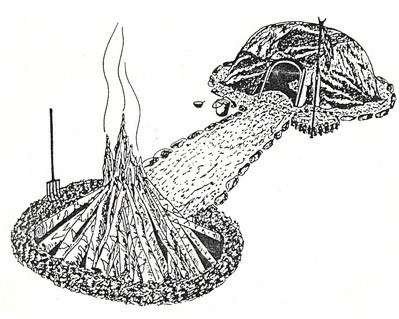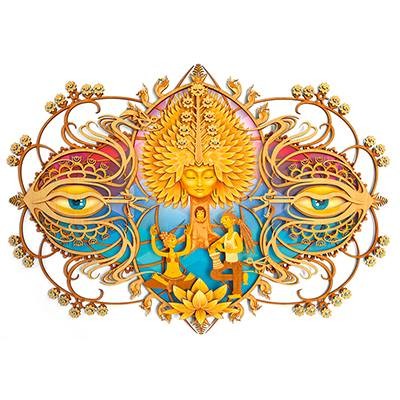The American bison, also known as buffalo, was critical to the survival of the tribes on the Great Plains. It was their main source of food. These animals provided resources to make items such as covers for their homes, glasses, beds, ornaments, tools, knives, clothing, etc. Every part of these animals was used!
That is why the tribes had to keep moving along with the seasonal migrations of the herds. And that is why teepees were such convenient homes, as they were easily set up, simple to transport and rebuild, and suitable for the whole year, allowing to perpetuate this nomadic lifestyle.
The teepee was considered by nomadic hunters as “a good mother” who shelters and protects her children. A buffalo hide teepee cover took between 20 and 22 hides.
For the nomadic natives of the Great Plains, the Buffalo constituted a Spiritual Being that blessed people with everything they needed to survive.
They considered it a direct manifestation of the Great Spirit, a Sacred Being …
If a child’s name included the word “buffalo” in it, the natives believed that the child would be strong and mature quickly. And even though a name in itself was no guarantee of automatic transformation, a “buffalo” child generally lived up to the expectations of others, striving to achieve what his name implied.
If a warrior was named in a vision or great hunting or war achievement, and his new name included the word “buffalo,” it meant that the buffalo was his spiritual helper, or that he exhibited the strength of a buffalo, or that he was an extraordinary hunter.
The tribal societies that were named after the buffalo, had the animal as their patron; most likely, all or most of the members of the tribe had also seen buffalos in their dreams or visions.
The Medicine Men who saw the buffalo in the visions during which they were called to practice medicine, thereafter sought the buffalo to commune with the Great Spirit.
Sitting Male Bison or Sitting Bull (Tantanka Iyotanka), was one of the Great Chiefs and Sacred Men of the culture of the Prairies. He was a Lakota leader in the area that is now known as South Dakota.

The call of the Buffalo was a constant and essential practice on the Plains.
All the Plains tribes had special songs or ceremonies designed to attract buffalo to their camp areas.
the buffalo herds to approach the camps. In the first place, the problems of transporting huge quantities of meat and heavy skins were not an easy task. Second, hunting in a territory of one’s own domain was much safer. In particular, penetration into territories occupied by other tribes, including potential disputed areas, was very dangerous.
No one knows how many buffaloes there were in North America before the arrival of the Europeans. In 1830, settler hunters estimated the number of buffalo in the Great Plains at 40 million. They observed that the need for grass and water keeps buffaloes on the move most of the time and commented that when a herd left a river and set off, it sounded like a distant thunder that could be heard for miles.

The number of buffaloes began to fall drastically since the arrival of the Europeans to America, in particular because of the expansion of the railroad, the creation of human settlements, the indiscriminate hunting and the creation of the reserves.
It became clear that the natives and the Europeans viewed the buffalo from different points of view. The natives had learned to hunt the buffalo skillfully with the bow and arrow, while the white hunters used a precision rifle at long range. While the natives became dependent on the buffalo, the Anglo-American culture emphasized the cultivation of the land, and the buffalo was eventually hunted for sport. In contrast, Native Americans enshrined the buffalo as the center of their ceremonial and everyday life.









